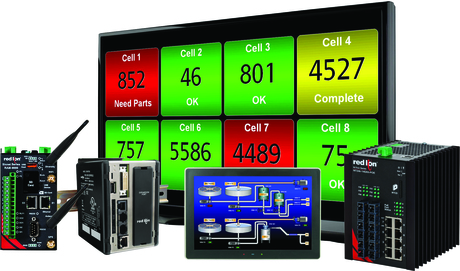Addressing IIoT challenges

Connecting disparate devices from multiple manufacturers is a key first step to creating the Industrial Internet of Things (IIoT). This article explains how protocol conversion addresses the challenges of connecting legacy equipment.
The IoT is a hot topic these days, mainly due to the projected rapid growth of interconnected devices. According to Berg Insight, the number of wireless IoT devices in automation networks is forecast to grow at a compound annual growth rate of 27.2% to reach 43.5 million by 2020.
However, the Industrial Internet of Things (IIoT) is more of a near-term reality, with many industrial firms striving to take advantage of its benefits. There are many different terms for IIoT, including Industry 4.0 and the Connected Factory. Whatever you choose to call it, how can you take steps to get in the game?
The challenge — IIoT readiness
One might wonder how to get started with IIoT, especially when it involves equipment from different manufacturers that is five, 10 or 20 years old. How do you solve the challenges of being IIoT-ready when you use legacy devices to operate many of your processes?
Replacing equipment is not an option, due to cost and integration time, so it’s important to find a way to not only protect an existing investment, but equally to make it compatible with more modern equipment. This may seem to some like a ‘best of both worlds’ scenario.
The answer — protocol conversion
Protocol conversion is a key first step in solving the multivendor and legacy equipment challenge. Protocol converters are devices that translate standard or proprietary protocols in one device so that it can be understood by others, resulting in interoperability.
Using a manufacturing floor as an example, there are typically many different devices in operation, each with its own protocol, and there is a need to handle these disparate protocols in order to gather required data. The ability to provide information conversion in a human machine interface (HMI) — or other automation products — across a multivendor environment is an efficient way to connect different devices with differing protocols and to enable aggregation of that data collection.
Protocol conversion allows users to collect data from different devices and different protocols and to ‘translate’ those in a centralised device, enabling easy collection and compilation of data from all over the factory floor. This data is then turned into usable, trend-related information and reports from which informed decisions can be drawn and effective resource planning carried out. This is sometimes referred to as the mining and displaying of data for actionable intelligence, which gives users real-time visibility and helps make operations more efficient.
Connect — speaking the same language
There are benefits in bringing new and legacy equipment together on the same network. Again on the factory floor, some newer equipment may be ethernet-ready, while older equipment may use a serial connection and a legacy protocol specific to that vendor. By integrating different devices (and enabling legacy devices to talk to newer devices), it’s possible to have disparate equipment communicating across multivendor environments.
Industrial environments are embracing newer communication infrastructures such as cellular M2M, Wi-Fi, Gigabit Ethernet, fibre and Power over Ethernet. These communication technologies help deliver and enable higher-bandwidth applications that bring more information and intelligence to manufacturing environments.
Monitor — using data to visualise processes
Protocol conversion is also important for monitoring processes — collecting and analysing data to develop more efficient operations and reduce downtime. In particular, when protocol conversion is implemented in multivendor environments, users can leverage visual management solutions to display key performance indicators (KPIs) that can be used for tracking, assessing and analysing manufacturing processes. These performance measurements are commonly used to evaluate success in relation to goals and objectives. While KPIs tend to vary by organisation, common examples of KPIs in manufacturing include: count (good or bad), reject ratio, rate, target, Takt time, overall equipment effectiveness (OEE) and downtime.
Control — increasing operational efficiencies
Protocol conversion can help integrate PLCs, PCs and SCADA systems to collect and process data in real time to control devices and applications that directly affect operations. Exercising control over operations could mean such things as having the ability to turn legacy serial-connected equipment on or off, or open or close valves regardless of location.
Addressing IIoT challenges through protocol conversion enables organisations to improve productivity and increase operational efficiencies through real-time device connection and data processing. Using this technology, all devices — legacy and new — communicate to provide a holistic environment view that allows for more effective planning and action. By enabling disparate devices to communicate, users can connect, monitor and control operations from a single platform. This type of data-driven monitoring and decision-making will get any organisation well on the way to true IIoT readiness.
How smart HVAC is creating sustainable buildings
By integrating advanced technology and data-driven strategies, building operators can greatly...
Smelly research could influence HVAC industry
In a dedicated lab space that mimics a tiny house, scientists are investigating the impact of...
Lifestyle community gains a new level of connectivity
GemLife, a developer of over-50s lifestyle communities, was facing challenges with its fixed...




